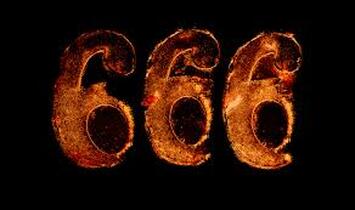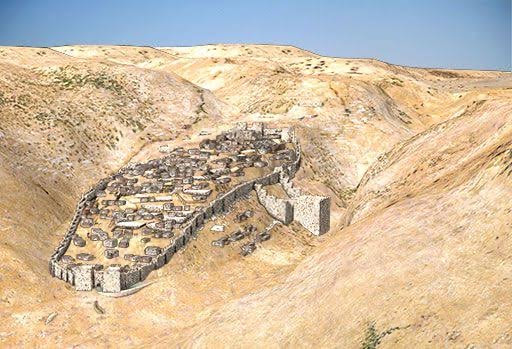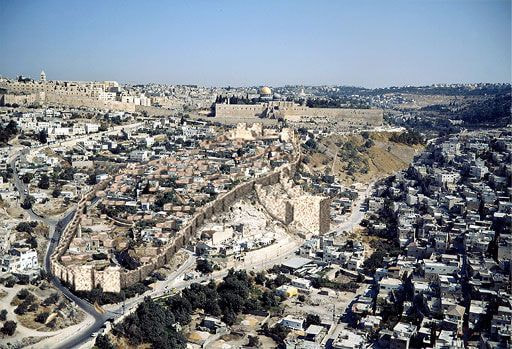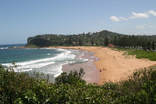SO...WHAT'S SO SPECIAL ABOUT ZION?
The extraordinary place known as Tzion (or Zion)
We first encounter it as SALEM in the record of Abraham after the recovery of Lot’s family from the alliance of kings who had raided Sodom.
The king of Sodom came to meet and thank Abraham in the King’s Valley—that is, Kidron Valley on the east of today’s Jerusalem—ancient Salem.
The mysterious Yahweh-worshipping king/priest of Salem also came out and Abraham offered him a tenth of the spoil he had taken.
The settlement called Salem was located there because of the ancient spring known as Gihon, meaning ‘gushing forth’.
It’s a long story, but after Israel’s sojourn in Egypt, followed by 40 years of wilderness folly, Joshua led them into the land long ago promised to Abraham.
The site featured early in the patriarchal narratives and came to be known as The Site or The Place—HaMakom in Hebrew. In my view it was where Jacob had his vision/dream and where earlier, Abraham had come on his mission of obedience with Isaac. Its importance is highlighted in true Hebrew form in those narratives by the almost tedious repetition of the term HaMakom. (For information on this almost tedious Hebrew repetition for emphasis, see my e-book ‘THE TEMPLE QUEST’ …details on Home Page)
God had His eye on this place, The Place. It was set apart by Him. It was there, after his extraordinary dream at HaMakom that Jacob declared, “this is the Beyt-El”…in our language “this is Bethel—House of God”!
Now we’re getting close to why this site is special.
But—what is significant in God’s plan, of course, attracts the attention of the adversary, and all of Israel’s enemies. And so, in time it became occupied by a Canaanite clan known as the Jebusites whose name means ‘to tread down’ or ‘to trample’.
This special place upon which God had his eye—was now a stronghold resisting Israel’s claim for many years…until David!
The Jebusites, who had enclosed the legendary spring with a great wall (see picture) mocked David from the walls; “you’ll never get in here—even the blind and lame will repel you!” But, as 2 Samuel 5:7 reveals with a wonderful…’NEVERTHELESS, David took the stronghold of ZION, that is, the City of David’.
So here emerges a new name. David’s commander Joab got into the fortress via the ‘tsinnor’ or water tunnel—that is, via the Gihon Spring water system. (I believe it’s a possibility that this first mention of Zion, or more correctly Tzion, derives from the word Tsinnor or Tzinnor describing the spring and its gushing stream of life-giving water).
In Psalm 42, those exiled with David due to Absolom’s actions are dispirited and long for the sounds of joy and praise—and of the ‘waterspouts’ or ‘cataracts.’ That word again is Tsinnor and I believe what the writer is expressing is his longing to be back in Zion where the roar of Gihon’s flow deep below the city walls where David had erected his tent for the ark, reflected the deep yearning of his own heart for God; ‘deep calls to deep at the sound of your tsinnors’!
Be that as it may, the truth is that the place known before David by the sad name ‘downtrodden’ or ‘trampled’ becomes Zion and the place of invigoration and encouragement. It becomes God’s City, from whence the voice of the Lord will sound forth! ‘They shall call you The City of the LORD, Zion of the Holy One of Israel’ (Isaiah 60:14); ‘for the law shall go forth from Zion, and the word of the LORD from Jerusalem (Micah 4:2 and Isaiah 2:3); ‘the Lord roars from Zion and lifts His voice from Jerusalem (Amos 1:2; Joel 3:16) and in further scriptures God’s dwelling place is in Zion; He blesses from Zion and holds forth His sceptre from Zion.
We cannot diminish the strategic importance of Zion in God’s agenda.
That is why I believe that this place that both God and David had in their hearts—this Zion, which is the City of David—is where Solomon built the temple. Yes, in the City of David—which in their times was still limited to the south-east ridge of the Mount Moriah complex!
It’s no good pretending that Zion now embraces the so-called Temple Mount enclosure. No, Zion signifies a very specific spot, related to Gihon Spring representing the life-giving or living water.
The great walled enclosure several hundred metres to the north was the Roman Fortress Antonia housing the Legio X Fretensis—the Tenth Roman Legion. It was not built by Solomon and its western wall is not related to the temple of which Jesus said, “not one stone will be left upon another.”
Here is what is important to me: that somewhat insignificant stronghold, having life-giving water as its raison-d’être and held so long by people characterised by the awful name Downtreaders was transformed by the king who typified the Greater King to come. It was transformed into a place of lifting up.
It became the dwelling place, the home, the ‘fortress’, of God—the One who lifts up—and who lifts downtreaders and downtrodden alike.
How like God in His transforming work.
In the same way, His ‘Jerusalem to come’—the new, spiritual one which is coming down—will consist of both downtreaders and downtrodden alike, who’ve been made new in Jesus Christ and ‘like a Bride adorned for her Husband’—you know—the One who said in the same place, “behold, I make all things new!” (Revelation 21. Ponder also Hebrews 12:22-24)
Attached pics illustrate what the Jebusite stronghold which became the City of David, looked like in early times. The second pic retains the walled outline of the City of David superimposed over its appearance today.
We first encounter it as SALEM in the record of Abraham after the recovery of Lot’s family from the alliance of kings who had raided Sodom.
The king of Sodom came to meet and thank Abraham in the King’s Valley—that is, Kidron Valley on the east of today’s Jerusalem—ancient Salem.
The mysterious Yahweh-worshipping king/priest of Salem also came out and Abraham offered him a tenth of the spoil he had taken.
The settlement called Salem was located there because of the ancient spring known as Gihon, meaning ‘gushing forth’.
It’s a long story, but after Israel’s sojourn in Egypt, followed by 40 years of wilderness folly, Joshua led them into the land long ago promised to Abraham.
The site featured early in the patriarchal narratives and came to be known as The Site or The Place—HaMakom in Hebrew. In my view it was where Jacob had his vision/dream and where earlier, Abraham had come on his mission of obedience with Isaac. Its importance is highlighted in true Hebrew form in those narratives by the almost tedious repetition of the term HaMakom. (For information on this almost tedious Hebrew repetition for emphasis, see my e-book ‘THE TEMPLE QUEST’ …details on Home Page)
God had His eye on this place, The Place. It was set apart by Him. It was there, after his extraordinary dream at HaMakom that Jacob declared, “this is the Beyt-El”…in our language “this is Bethel—House of God”!
Now we’re getting close to why this site is special.
But—what is significant in God’s plan, of course, attracts the attention of the adversary, and all of Israel’s enemies. And so, in time it became occupied by a Canaanite clan known as the Jebusites whose name means ‘to tread down’ or ‘to trample’.
This special place upon which God had his eye—was now a stronghold resisting Israel’s claim for many years…until David!
The Jebusites, who had enclosed the legendary spring with a great wall (see picture) mocked David from the walls; “you’ll never get in here—even the blind and lame will repel you!” But, as 2 Samuel 5:7 reveals with a wonderful…’NEVERTHELESS, David took the stronghold of ZION, that is, the City of David’.
So here emerges a new name. David’s commander Joab got into the fortress via the ‘tsinnor’ or water tunnel—that is, via the Gihon Spring water system. (I believe it’s a possibility that this first mention of Zion, or more correctly Tzion, derives from the word Tsinnor or Tzinnor describing the spring and its gushing stream of life-giving water).
In Psalm 42, those exiled with David due to Absolom’s actions are dispirited and long for the sounds of joy and praise—and of the ‘waterspouts’ or ‘cataracts.’ That word again is Tsinnor and I believe what the writer is expressing is his longing to be back in Zion where the roar of Gihon’s flow deep below the city walls where David had erected his tent for the ark, reflected the deep yearning of his own heart for God; ‘deep calls to deep at the sound of your tsinnors’!
Be that as it may, the truth is that the place known before David by the sad name ‘downtrodden’ or ‘trampled’ becomes Zion and the place of invigoration and encouragement. It becomes God’s City, from whence the voice of the Lord will sound forth! ‘They shall call you The City of the LORD, Zion of the Holy One of Israel’ (Isaiah 60:14); ‘for the law shall go forth from Zion, and the word of the LORD from Jerusalem (Micah 4:2 and Isaiah 2:3); ‘the Lord roars from Zion and lifts His voice from Jerusalem (Amos 1:2; Joel 3:16) and in further scriptures God’s dwelling place is in Zion; He blesses from Zion and holds forth His sceptre from Zion.
We cannot diminish the strategic importance of Zion in God’s agenda.
That is why I believe that this place that both God and David had in their hearts—this Zion, which is the City of David—is where Solomon built the temple. Yes, in the City of David—which in their times was still limited to the south-east ridge of the Mount Moriah complex!
It’s no good pretending that Zion now embraces the so-called Temple Mount enclosure. No, Zion signifies a very specific spot, related to Gihon Spring representing the life-giving or living water.
The great walled enclosure several hundred metres to the north was the Roman Fortress Antonia housing the Legio X Fretensis—the Tenth Roman Legion. It was not built by Solomon and its western wall is not related to the temple of which Jesus said, “not one stone will be left upon another.”
Here is what is important to me: that somewhat insignificant stronghold, having life-giving water as its raison-d’être and held so long by people characterised by the awful name Downtreaders was transformed by the king who typified the Greater King to come. It was transformed into a place of lifting up.
It became the dwelling place, the home, the ‘fortress’, of God—the One who lifts up—and who lifts downtreaders and downtrodden alike.
How like God in His transforming work.
In the same way, His ‘Jerusalem to come’—the new, spiritual one which is coming down—will consist of both downtreaders and downtrodden alike, who’ve been made new in Jesus Christ and ‘like a Bride adorned for her Husband’—you know—the One who said in the same place, “behold, I make all things new!” (Revelation 21. Ponder also Hebrews 12:22-24)
Attached pics illustrate what the Jebusite stronghold which became the City of David, looked like in early times. The second pic retains the walled outline of the City of David superimposed over its appearance today.

‘WOKE’ RIGHTEOUSNESS AND 666…
(Referencing Revelation 13)
SOMETHING TO CHEW ON…
What we have witnessed over the last couple of decades is the rise and rise of rampant, deliberate and aggressive defiance of God, and dismissal of human sinfulness and necessity for salvation through Jesus Christ.
The loud and brash ‘new’ atheists have led the charge in the elevation and worship of a new ‘goddess’. She is known as ‘Science’ (Knowledge) and purports to be leading humankind out of darkness into everlasting light, having the ability to solve all our problems and difficulties. It’s all upwards from here. Oh dear!
Behold! Worship of her has brought to humankind a wonderful new and improved ‘righteousness’.
Having jettisoned the foundation of Biblical order and righteousness, it became essential to found another. This newly invented, fake righteousness may even, on occasion, look similar to the real thing—except that it must rely solely on human and earth-bound resources. But, most of the time it looks nothing like true Righteousness. It relies on establishing a collective self-righteousness from which devotees can look out on the world with a view to bringing it (or forcing it) into alignment.
It relies on inventing new classes of ‘sin’ because those the Bible calls sin don’t suit our advanced knowledge, or the edicts of our new goddess! (Not to mention that calling certain behaviours and fantasies sinful could be traumatising to some poor little pumpkins who like to indulge them).
The new—almost ‘unpardonable sin’—has become daring to call something sin that the new righteousness considers OK, or even a virtue!
The ‘new’ righteousness depends heavily on categorising people into classes of the newly-innocent (even persecuted) over against the truly sinful who believe them wrong—or simply don’t agree with them. Actually, not agreeing with them also comes close to being unpardonable—and is called ‘hateful’.
To make this 'righteousness' work, there must be victims—and they’re all too easy to find among a new class, called the perpetually-offended! It is these poor souls that the newly-righteous, or Woke (usually with much fanfare and loud publicity) are rescuing: the ‘colonised’ from the terrors of the evil colonisers; the ‘put upon’ from white privilege or supremacists; the minorities (regardless of THEIR sins), from the judgemental majority; the animals from those who eat meat, and etc. etc!
Now—here’s a radical proposition. Suppose this human, alternate and perverted Woke righteousness was to be spiritually represented by a number, in contrast to the genuine Righteousness of God whose Righteousness is real and true, complete and life-giving. His could therefore be represented numerically as 777. And now you see where I’m going…
The fake, invented righteousness of humankind—what we call Wokeness—could then be represented as 666: a vain attempt, that forever fails and falls short—never quite measures up to the 777 of God’s genuine and life-imparting Righteousness!
How difficult would it be then, for governments to enact laws based solely on this fake righteousness (they’re already doing it!) and to pressure citizens to comply? Citizens such as J K Rowling who has, in early April 2024 (apparently) just dared Scotland’s police to arrest her because she refuses to bow to the stupidity of a forced deceit of calling biological men, women.
Beware: this fake righteousness uses some of Christianity’s favourite words—but in a 666 kind of way that keeps falling short of their true biblical meaning. Like ‘love’ (for lust or self-gratification) or ‘peace’ and ‘reconciliation’ (when what is meant is capitulation or appeasement, or just dubious compromise).
666 can look near enough for some—to 777.
Christians…En-Garde!


